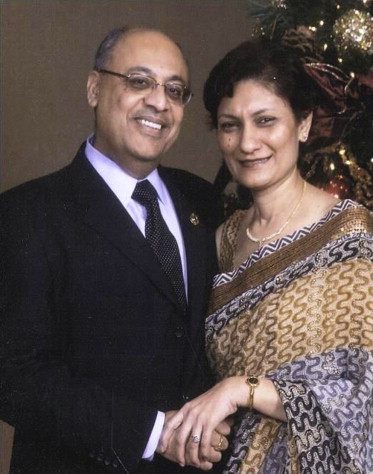Dr. Narula was born in Ajmer, India, on July 16, 1956. He graduated from Sawai Mansingh (SMS) Medical College in Jaipur, India, in 1978, where he also completed his training in internal medicine in 1983. He completed a fellowship in cardiology at the All India Institute of Medical Sciences in Delhi, India, graduating in 1986. He went on to pursue a PhD in cardiovascular immunology defending his thesis in 1994. In 1989, he came to Massachusetts General Hospital, Boston, MA, where he pursued fellowships in cardiology, Heart Failure and Transplantation, as well as imaging. Subsequently, he took a position as a Clinical Assistant in the Cardiac Unit at Massachusetts General Hospital. In 1997, he moved to Philadelphia as Director of Cardiovascular Research at the Hahnemann University Hospital, where he then became the Director of the Heart Failure and Transplantation Program, Thomas J. Vischer Professor of Medicine, Chief of the Division of Cardiology, and Vice-Chairman of the Department of Medicine for Research. In 2003, he moved to the University of California- Irvine School of Medicine, Irvine, California, as Chief of Cardiology, Professor of Medicine and the Associate Dean for Research. In 2011, he moved to New York City as the Phillip J. and Harriet L. Goodhart Chair of Cardiology and Professor of Medicine at the Icahn School of Medicine at Mount Sinai. Dr. Narula also serves as the Associate Dean of the Arnhold Institute of Global Health at Mount Sinai, Director of the Cardiovascular Imaging Program at the Zena and Michael A. Wiener Cardiovascular Institute & Marie-Josée and Henry R. Kravis Center for Cardiovascular Health, and Director of Operations for the Mount Sinai Heart Network.
Dr. Narula has had a spectacular career. His investigations have led to over 1000 publications, including peer-reviewed papers, chapters, and abstracts. He has edited more than 30 books or journal supplements. In 2007, he became editor-in-chief of the Journal of American College of Cardiology – Cardiovascular Imaging and then the editor-in-chief of the Global Heart (the official Journal of the World Heart Federation). He has recently also assumed the role of Executive Editor of the Journal of the American College of Cardiology. He was the founding editor of the Heart Failure Clinics of North America.
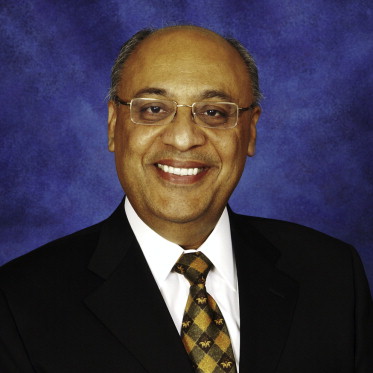
Dr. Narula is a nice guy and is the proud father of two children, both of whom appear to be following in his and his wife’s tracks. His wife is a cardio-pulmonary pathologist at Weill Cornell Medical College in New York City. It was a pleasure speaking with this most impressive man, an excellent student, physician, researcher, teacher, administrator, sportsman, husband, father, and a friend.
WILLIAM C. ROBERTS, MD (hereafter ROBERTS ): Dr. Narula, I appreciate the opportunity to talk to you. We are in my home in Dallas, Texas on November 17, 2013, at the time of the Annual Scientific Sessions of the American Heart Association. Dr. Narula, may we start by my asking you to discuss your early life, your parents and siblings, and your growing-up environment?
JAGAT NARULA, MD, PhD (hereafter NARULA ): Dr. Roberts, I am truly grateful for this opportunity. You have the most beautiful home.
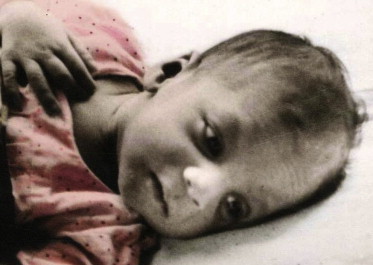
I was born in Ajmer, India, now in the state of Rajasthan (“the Land of Kingdoms”). At that time, Ajmer was a state in itself; a beautiful city, located approximately 250 miles south of Delhi, and 80 miles west of Jaipur, the capital of Rajasthan.
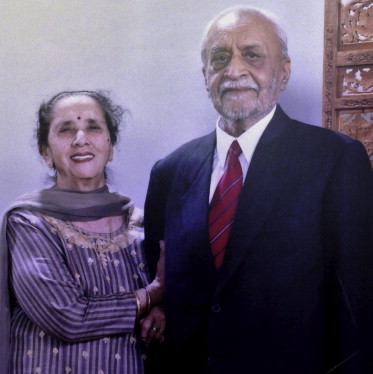
My father is Bhagat Narula, and my mother, Ranjit Vasudev. My dad was an economist and worked for the government as well as for the United Nations. My mother was a very well educated person for her times, although she chose not to pursue professional career. She took care of my younger (by 6½ years) brother, Mohender Narula, and I. My brother is a dentist, living in California. My (paternal) grandfather was the superintendent of the police in the state of Ajmer. He had a major influence on me; I am a cardiologist today essentially because of his wanting me to be a cardiologist. In high school, I wanted to attend the Indian Institute of Technology (IIT) and pursue a career in nuclear physics. He however declared, “my grandson is going to be a cardiologist.”
My father has 2 younger brothers and my mother has 2 younger sisters. Interestingly, their marriages were arranged, so that my father’s younger brothers married my mother’s younger sisters! I grew up very close to my paternal grandfather, but unfortunately did not have the opportunity to meet my paternal grandmother, as she passed away before I was born. However, the rest of us, we all lived in a huge family home. It was a very cohesive family.
ROBERTS : The house that you grew up in had your mother and father, you and your brother, and how many others?
NARULA : Two uncles, 2 aunts, 3 cousins, and the loving head of my family, my grandfather. We all ate together.
ROBERTS : Most meals had how many people at the table?
NARULA : If everyone were in town, there would be 12 people.
ROBERTS : The big meal of the day was lunch or dinner?
NARULA : Dinner.
ROBERTS : What time of the day was that?
NARULA : Normally my grandfather, who practiced as an attorney after retiring from his career with the police, would return home at 6:00 pm, and then take a long walk. We would all assemble for dinner around 8:00 pm. All the children would be home by then, and by that time, I would be home from school and badminton. At dinner, we would discuss whatever had happened during the day. It was during one of those dinners that I made the statement that I wanted to go to IIT and study nuclear physics, and my grandfather’s response that he wanted me to be a cardiologist!
ROBERTS : What was the typical conversation on the dinner table?
NARULA : Mostly contemporary issues, including politics, social issues, science, and sports. My grandfather, father, and youngest uncle dominated the discussions, but I was expected to opine in every possible issue, the privilege of being the first grandchild in the family!
ROBERTS : More about the relationship with grandfather?
NARULA : In India, the last funeral rites are performed by the most loved one; this honor traditionally goes to the oldest son unless specified otherwise. In my grandfather’s will, it was spelled out that his first grandson, whom he loved the most, would perform this honor; he had proudly shared this with me and read the will to me. On the day he died, we were unable to locate his will and I was hesitant to mention the change to my father because he would naturally have held that right. To honor my grandfather’s last wish, I discussed this with my father and hoped that he wouldn’t mind. And he said, “I am proud that I have groomed you in a way that my father wanted you to do this. I am the proudest father; you go ahead and do it.” I, however, thought that it might be prudent that we did it together. And we did.
ROBERTS : When was your grandfather born? What was his name?
NARULA: Jai Singh Narula. He was born on December 1, 1905, in Punjab, India in a city that is now a part of Northwest Pakistan. He was educated as a lawyer in the 1930s. He attended Gordon College in Rawalpindi, which had started as a Christian Grammar High School in 1856, during the British Raj and evolved into a college in 1893. My father also attended Gordon College.
ROBERTS : When was your father born?
NARULA : My father was born on August 30, 1927.
ROBERTS : What about your mother?
NARULA : She was born on September 7, 1927, also in the same area.
ROBERTS : How did they move to India?
NARULA: During the independence of India in 1947, when the partition of India occurred, most non-Muslims moved to the India “side” and the Muslims partially moved to Pakistan. When the family migrated to India, my grandfather was serving in the police force.
ROBERTS : How long did you live in Ajmer?
NARULA : My grandfather moved to Jaipur in 1956, when the Ajmer state became a part of Rajasthan state, but my parents and I moved there in 1962.
ROBERTS : Are you Hindu?
NARULA : My family is mixed Sikh-Hindu family.
ROBERTS : What about your schooling?
NARULA : I started my schooling at Sophia School in Ajmer when I was 5 years old, and completed my schooling at Adarsh Vidya Mandir when we moved to Jaipur; I graduated from the school in 1972. I was a good student, and participated in competitive sports (especially badminton), debate, and drama. I must mention this–my sixth grade homeroom teacher, K.S. Katiyar , influenced my life immensely. He was the homeroom teacher from sixth grade to eleventh grade. While in the sixth grade, he picked 10 students whom he believed were likely to do very well and bring laurels to the school. Every morning he would bicycle to my home, and wake me up at 3:00 am, 365 days a year. His passion was to make me and the other nine students work towards exceling at state-level examinations. He waked the other nine students in their homes and returned later to make sure we had not fallen back to sleep. Thus, I started studying at 3:00 am, which is a habit I have continued. Six of the ten students were on the merit list of the 20 most successful candidates. He was proud of his experiment, and continued it for the next year. Fortunately for me, I made it to the top of the science biology strata. I was number two in the universal list.
ROBERTS : What time do you go to bed?
NARULA : During school, I went to bed around 9:00 pm, now 11:00 pm.
ROBERTS : He is still living?
NARULA : Yes. He lives in Jaipur.
ROBERTS : How did your family react to this?
NARULA : When I was being awakened at 3:00 am, my father reasoned to support my efforts and both him and my mother started waking up at 3:00 am also. My dad worked on his office work early, while my mom would wake and perform the household chores or read holy-book.
ROBERTS : Did you have other schoolteachers who had an impact on you?
NARULA : Yes. RKS Pundheer , a literature teacher, who influenced me in participating in debates, poetry, and writing. He was essentially responsible for my oratory growth. Another was AC Jain, the biology teacher. He taught me at least an hour a day or more after school (without payment) so that I could do well in my exams, and the school could be proud of my performance.
ROBERTS : Was there enough money in the family for life to be comfortable?
NARULA : Yes. My grandfather and father did exceptionally well professionally.
ROBERTS : You started kindergarten at what age?
NARULA : Age 5.
ROBERTS : How old were you when you entered the first year of medical college?
NARULA : I was about to turn 17.
ROBERTS : Medical school training was how many years?
NARULA : Four and a half years.
ROBERTS : You were 22 years old when you finished medical school?
NARULA : Yes.
ROBERTS : Where did you go to Medical School?
NARULA : I attended SMS Medical College in Jaipur from 1973–1978, followed by an additional year for internship. In India, the medical degree is not obtained until the internship is completed. The internship allows one to get a good feel for all clinical subjects before making a decision regarding specialty. After the internship, the diploma is awarded as the Bachelor of Medicine and Bachelor of Surgery (MBBS). So I completed my medical school in 1979 and was awarded the Best Student Trophy and the Best Student Gold Medal for the best overall performance.
ROBERTS : How many were in your Medical School class?
NARULA : 150 students.
ROBERTS : How many medical schools are in India?
NARULA : Currently about 250!
ROBERTS : Are most of them about 150 students per class?
NARULA : At least 100.
ROBERTS : Where did you do residency? Did you have a hard time deciding on Internal Medicine/Cardiology?
NARULA : Internal Medicine/Cardiology route was all settled for me. Remember, my grandfather had made that decision! He was convinced that his grandson would become the best cardiologist in India. I did my internal medicine residency for three years (1979-1983) at the same school- SMS Medical College– the two years as a junior resident, and the third year as a senior resident. We were expected to submit a dissertation for the completion of the academic degree. I worked on the HDL cholesterol in coronary artery disease. This resulted in a degree in Internal Medicine. I was awarded the Best Resident Gold Medal at the end of the residency training.
Early in medical school, I met Dr. Amrit Khalsa , who was my grandfather’s cardiologist. She subsequently headed the department of cardiology at SMS Medical College. Although she had no relation to our family, my grandfather treated her like a daughter, and in turn, she treated me like a son. The subspecialty certification in cardiology in India was in early stages at that time, and she was preparing to go to Goteborg, Sweden for training. She asked me to spend 3 hours with her every evening and read Friedberg’s Diseases of the Heart to her. I remember, I was in the very first year of medical school and I went to her home directly after my anatomy dissection class every single day. I had no idea what cardiology was, but I read her the entire Friedberg’s textbook in 3 months, cover-to-cover. Enthused by the outcome, we went through Hurst’s The Heart in another three months, when she left for Goteborg. Could I have looked at any other specialty after that? I knew more cardiology at the end of the first year of my medical school than I knew anatomy. As destiny would have it, I am going to be editing the Friedberg’s textbook.
Braunwald’s textbook had appeared when I had started my residency in Internal Medicine (1980); I read it from cover to cover. In Braunwald’s 1 st edition in the congenital heart disease section, which was written by William Friedman, I discovered an error as the VSD and TOF drawings were swapped. I wrote a letter to Dr. Braunwald at that time complimenting him on his book and telling him about the diagrams. He wrote me a beautiful letter thanking me for drawing his attention to the error and that it would be corrected in the second edition. In 1997, I met Dr. Braunwald in Orlando, FL, during the 70 th AHA Scientific Sessions. As I introduced myself to him, he stared at me and asked if I were the one who drew his attention to the error in his book. Imagine my surprise since more than 16 years had elapsed!
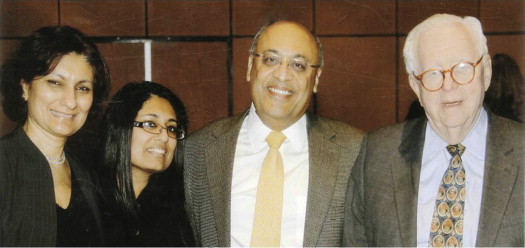
ROBERTS : Did any of the areas such as surgery, obstetrics, pediatrics, not attract you at all during your internship?
NARULA : Everything other than cardiology had become inconsequential. Nothing attracted me more. Most of my internship year officially or unofficially was committed to cardiology. Interestingly, internship was the year that I also devoted much time to my debut as an editor of the medical school magazine.
ROBERTS : Who were your mentors during medical school?
NARULA : In the first year of the medical school, my mentor was my anatomy teacher, Dr. N. Dwivedi . Although reading more cardiology than anatomy, physiology or biochemistry, I flourished in anatomy. My medical school has preserved my written examination books and they still circulate the books to the entering class for how tests should be written. The other was the chairman of pharmacology, Dr. P.C. Dandiya , who is still teaching at the age of 88. He has been a highly acclaimed researcher in psycho-pharmacology, who inspired me to think outside the box.
ROBERTS : How did you capture the editorship of the magazine during medical school?
NARULA : In medical school, we had a student union with elected student vice-president, literary secretary, and game secretary.
ROBERTS : When was your first medical paper published?
NARULA : My first abstract was published during my internship, and was presented at the annual meeting of the Association of Physicians of India in Delhi. I wrote extensively during my residency and cardiology fellowship.
ROBERTS : Where did you do your cardiology fellowship?
NARULA : I did my cardiology fellowship at the All India Institute of Medical Sciences (AIIMS), Delhi from 1983 to 1986. It is the premier medical institution in India. Successful completion of training and the board certification earns a Doctor of Medicine (DM) degree in Cardiovascular Medicine. I was again awarded the Gold Medal for being adjudged the Best Fellow in cardiology. In 1986, I joined the faculty, first as a senior research officer and then as Assistant Professor in the department of cardiology. I simultaneously pursued a PhD in cardiovascular immunology; pursuing PhD after DM was rather unheard of in India, where basic science and clinical medicine have remained almost essentially exclusive. During PhD, I received the Best Junior Investigator Award from the Cardiological Society of India.
ROBERTS : Who did you work with for your PhD research?
NARULA : I worked with Dr. M.L. Bhatia , who was the chief of cardiology at that time. Although I wanted to work on atherosclerosis and proposed LDL receptor polymorphisms for my PhD thesis, he suggested that I work on rheumatic fever, which was a widely prevalent problem in India. We agreed to work on the diagnostic strategies for identification of the myocardial involvement with the hope that we will not only be able to better identify cardiac recurrences but also would learn more about the pathology of rheumatic carditis. I performed serial endomyocardial biopsies in patients with rheumatic fever; in fact that was my first introduction and discussion with you when you visited AIIMS in 1988. At that time, I also received antimyosin antibody from Dr. Edgar Haber, Chief of the Cardiac Unit at MGH for radionuclide imaging of myocardial involvement during active disease. We learned a lot from these studies, and proposed that rheumatic fever was more of an interstitial carditis as there was no significant damage to cardiomyocytes. Although I did not focus on atherosclerosis at that time, I remained attached to the subject and I have been now working on plaque instability for almost 20 years. In addition to Dr. Bhatia , Dr. Raj Tandon and Dr. K.S. Reddy were my PhD thesis promoters. I owe immensely to Dr. Tandon, the best pediatric cardiologist of India, for infusing in me the passion for research. My constant desire for translation of basic research to population science emanates from a strong influence of Dr. Reddy, who is a widely acclaimed cardiovascular epidemiologist. Dr. Reddy is also my closest friend.
ROBERTS : When did you come to United States?
NARULA : I presented my endomyocardial biopsy study in rheumatic fever at the American Heart Association meeting in November 1988 in Washington DC, where I met Dr. Haber. As I mentioned earlier, I had received the antimyosin antibody from Dr. Haber. The antibody needed to be labeled with Indium-111. We obtained a one-time special permission from the Government of India for the import of the radioisotope from Amersham, England and ordered 50 mCi of Indium-111. I gathered rheumatic fever patients from all the hospitals in and around the city of Delhi and completed the study of 14 patients (10 active) within 36 hours. Excited about the findings of the study, Dr. Haber invited me to MGH and Harvard Medical School. In July 1989, I started at MGH for my 2-year cardiology fellowship, followed by nuclear cardiology and heart failure/transplant fellowships. I completed my PhD thesis and the papers at MGH with the help of Drs. Edgar Haber, Bill Dec, Jim Southern, Ban-An Khaw and Hiro Yasuda. At that time, Dr. Haber and colleagues were working on evaluation of the role of antimyosin antibody imaging in myocarditis and cardiomyopathy, and I carried the molecular imaging work forward after I joined the Cardiac Unit. Dr. Dec, the current chief of the Cardiac Unit, essentially taught me how to write a medical paper…my discussions used to be too long!
ROBERTS : Were you married at that time?

